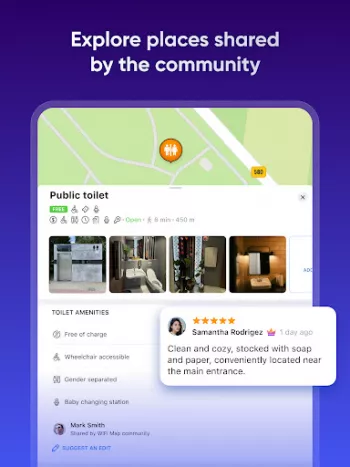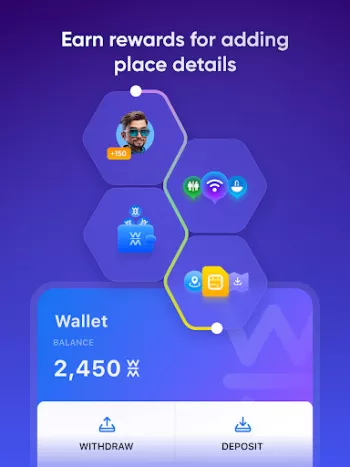Apps Home

The Intricacies of Discovering Free WiFi Passwords
In today's digital age, where connectivity has become paramount for both personal and professional engagements, the pursuit of free WiFi passwords has gained tremendous traction. The idea of accessing the internet without incurring any financial cost is appealing, especially in public spaces where one might find themselves without a stable cellular connection. The process of locating and connecting to free WiFi networks involves a confluence of technology, community effort, and real-time updates. Applications like WiFi Map serve as a boon for those in search of such connectivity, leveraging a community-driven approach to share WiFi passwords worldwide. This app, through its expansive database of over 150 million WiFi hotspots, empowers users to access the internet with ease and reliability. The mechanics involve users contributing and updating WiFi credentials, which ensures the database remains current and accurate. Through integrated features like WiFi analyzers and speed tests, the users can optimize connections, ensuring they're not only connected but are experiencing the best possible speeds. The dissemination of WiFi passwords via community contributions reduces the challenge of network isolation, making information more accessible universally. However, it's crucial to understand the legal and ethical boundaries of using such platforms, as accessing WiFi networks without consent may lead to infringements. Thus, informed usage, alongside a spirit of sharing and updating, underpins the effective functioning of platforms that facilitate free WiFi access.
The Role of eSIMs in Achieving Seamless Internet Access
As traditional SIM cards are slowly being phased out, eSIM technology is emerging as a revolutionary advancement in how we connect to mobile networks. This virtual SIM card technology holds significant promise in achieving uninterrupted internet access, particularly when combined with services like WiFi Map. Imagine stepping off a plane in a foreign country, and rather than scrambling to find a local SIM card vendor or a WiFi hotspot, your phone automatically connects to the local networks through an eSIM—ensuring you're never left without connectivity. WiFi Map’s introduction of eSIM packages allows users to buy internet service in over 70 countries, extending the idea of connectivity without constraints. These packages come in various data sizes, ensuring there is an option suitable for all usage needs, whether for casual browsing or heavier use like streaming and video calls. The digital nature of eSIMs means they can be activated in just a few taps, sans any physical installation, making them extremely user-friendly. They also often come without long-term commitments, appealing to travelers who may only need connectivity for a brief period. This flexibility enhances the capability of discovering WiFi networks by ensuring that even if a WiFi connection isn’t available, an eSIM can provide immediate access to the internet. By integrating eSIM capabilities, apps like WiFi Map empower users in navigating connectivity solutions, championing a future where devices are perpetually connected, irrespective of geographical location.
The Future of Community-Driven Connectivity Solutions
Community-driven platforms like WiFi Map are reshaping how the world accesses the internet, and this trend is set to continue well into the future. The strength of such platforms lies in the collaborative efforts of millions of users who actively contribute and refine available data, embodying the spirit of shared knowledge. As the internet continues to exponentially grow, the demand for real-time, accurate networking solutions becomes even more critical. WiFi Map capitalizes on this need by curating an ever-expanding network of WiFi hotspots globally, supported by a community that regularly updates passwords and connection quality information. User contributions not only enhance the database's reliability but also foster a sense of community where users feel a collective responsibility to support one another's connectivity needs. Moving forward, the role of AI and machine learning stands to revolutionize these platforms further. By integrating AI, apps could predict user needs, suggest optimal networks based on historical data, and even automate the connectivity process, ensuring a seamless user experience. The future also holds potential in expanding the scope of shared connectivity through partnerships with telecom and service providers, aiming for a more democratized internet access framework. As more users engage and contribute, community-driven connectivity solutions promise not only to meet the challenges of internet access but also drive innovation in how connectivity is conceptualized and implemented worldwide.
Navigating the Landscape of Offline Maps for Connectivity
Offline maps have evolved from basic navigation aids to sophisticated tools that play a crucial role in ensuring internet connectivity, particularly when traveling. As users venture into new territories where their usual service providers may offer limited or no coverage, offline maps become invaluable. WiFi Map takes this utility further by enabling users to download maps that are embedded with WiFi hotspot data. This means that even without an immediate internet connection, users can still navigate to nearby hotspots, ensuring they remain connected. The practicality of these maps lies in their capability to store extensive geographical and network information. For example, one could download a map of a particular region before a trip, ensuring that all potential WiFi hotspots are accessible offline. This preemptive approach is especially beneficial in remote or underdeveloped areas where internet access may be erratic. Moreover, by empowering users with tools to find additional amenities such as restrooms or water fountains, offline maps further enhance the travel experience, merging convenience with connectivity. The efficiency of these maps stems from continuous updates contributed by the community, ensuring the information is not only vast but up-to-date. As mapping technology progresses, the integration of AR (augmented reality) features could further revolutionize how users interact with offline maps, providing immersive experiences while ensuring connectivity. In essence, offline maps serve as the backbone of connectivity in areas where traditional solutions fall short, ensuring that a lack of real-time internet access doesn't hinder the user's experience.
Harnessing Security Tools for Safe Internet Browsing
In an era where cybersecurity threats loom large, having access to free WiFi is both a convenience and a potential risk. This is where security tools within connectivity platforms become indispensable. WiFi Map, for example, offers a built-in VPN (Virtual Private Network) service that safeguards users as they connect to public networks. The importance of such tools cannot be overstated, as public WiFi networks are prime targets for cyber-attacks, including data theft and interception of sensitive information. A VPN encrypts the internet traffic, rendering data unreadable to any unauthorized parties, thereby protecting user privacy. This protective layer is crucial for anyone transmitting sensitive data over public WiFi, such as during financial transactions. Furthermore, WiFi Map also offers tools like WiFi analyzers and network speed testers, which, while primarily designed for performance optimization, also assist in identifying potential security vulnerabilities within networks. Users need to remain aware of the security status of the networks they connect to and ensure their devices are protected. Moving forward, advanced security features like multi-factor authentication and real-time threat detection could be incorporated to bolster the integrity of public network usage. As users become increasingly aware of the need for privacy, apps that offer comprehensive security solutions alongside connectivity will lead the charge in promoting safe internet practices. Ultimately, while free internet access is a significant benefit, it’s paramount that such access does not compromise the user’s security and privacy.
For a comprehensive experience on Android or iPhone, users can Download for Android or Download for iPhone and explore the myriad of features aimed at enhancing both connectivity and security. Whether you're exploring bustling cityscapes or tranquil countrysides, staying connected and secure has never been easier.
Share Your Opinion
Your Email Will Not Be Published.
All Rights Reserved © Apps Home 2025











































Nahuel
I use it when I'm traveling, there are a lot of networks. I also used the esim service in Europe, it worked well. The toilet feature is also great....
Liege Chocolat
Good but I think it could be even better! Maybe a list function where filtering by distance or characteristics may be good.
A Google user
Excellent app, I really recommend it. Please improve the usability without mobile data (You should be able to find hotspots only with GPS having th...
Valerii Lubenets
The app logs me out occasionally, but this time it logged me out and I can't sign back in with my account where I have a lot of achievements, like ...
A Google user
The idea behind the app is great: offer a Wi-Fi database that is entirely created and maintained by the users. However, this is also the weakest po...